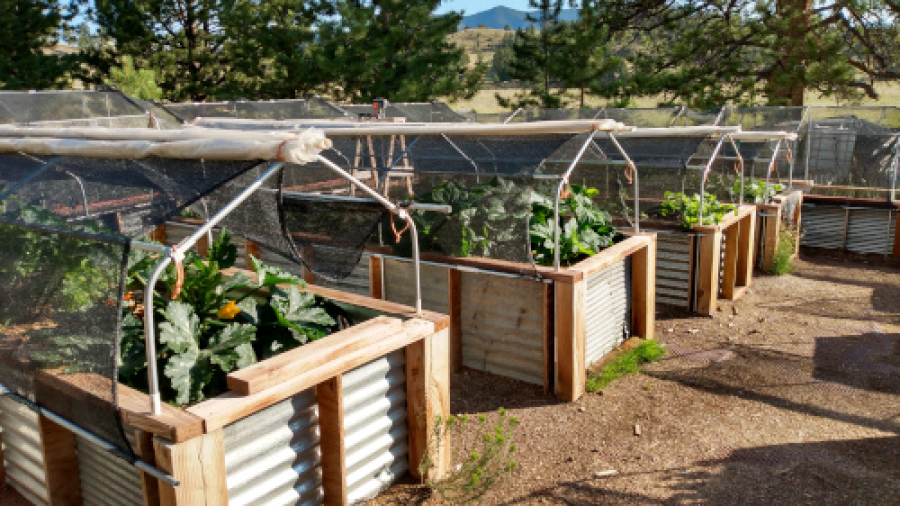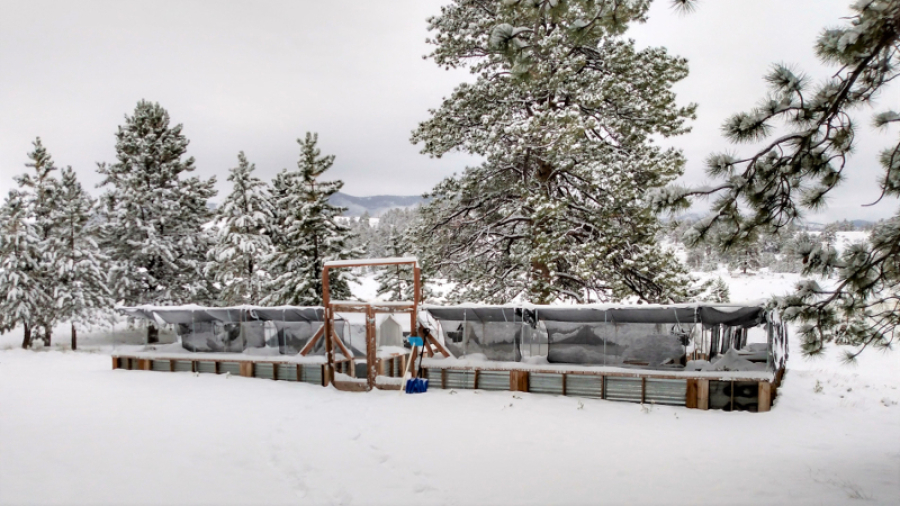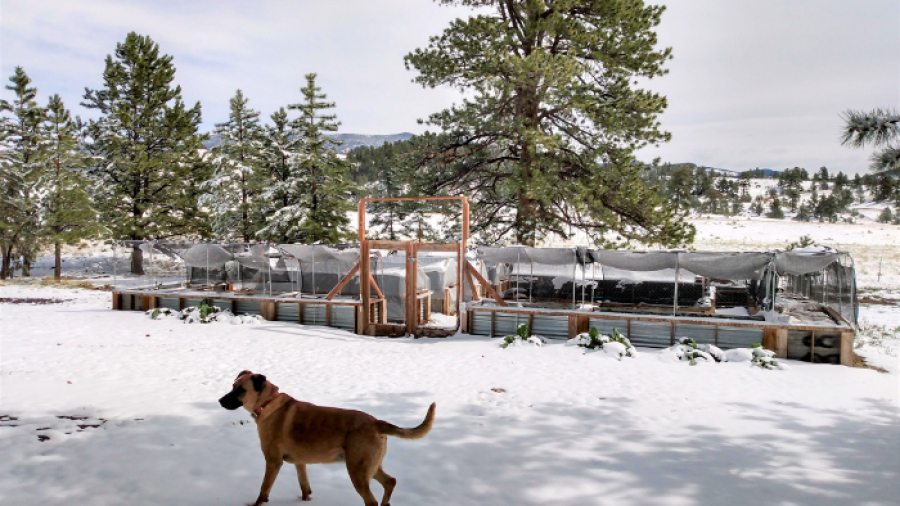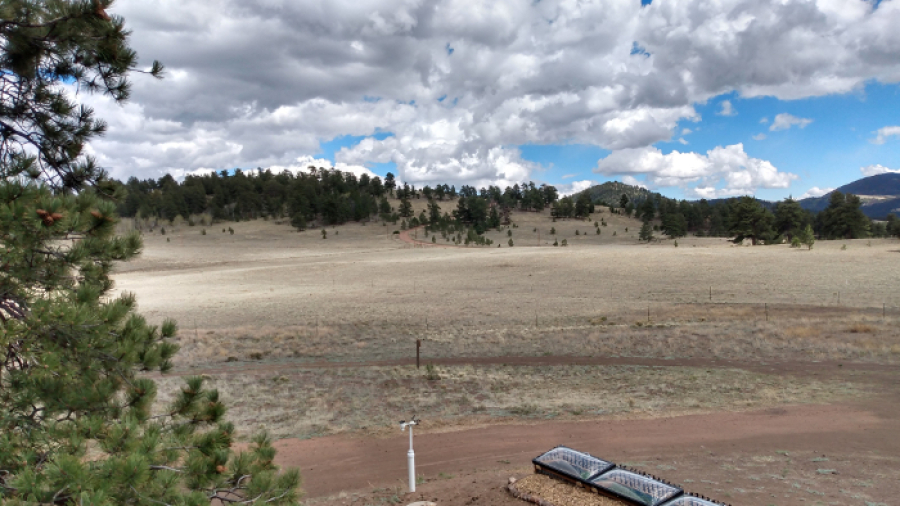I’m learning that EVERY YEAR IS DIFFERENT, especially at high elevation. Gardens here present more challenges than those at lower elevation: variable and cold weather, short seasons, new pests & old ones, personal health issues, as well as other factors such as COVID-19 in 2020, which affected seed & garden supply shortages. Fortunately, I had ordered all my seeds prior to the shortages, and I generally have all the other supplies I need on hand.

I’m learning to accept disappointing harvests with an attitude of knowing I’m fortunate to have whatever I’m able to harvest, and it’s a lot more than many other folks who don’t put out the effort. I shrug my shoulders and smile, knowing that what disappoints in one year may produce an abundant harvest the next.
2020 was by far the most challenging weather, and our first year to battle with mice & pack rats.
2019 I was still recovering from my hip injury in the spring, but together we planted a full garden. Somehow I did not remember to write a recap of what the garden produced in 2019, but I know there was a bumper crop of potatoes!
2018 I broke my hip in late August and was unable to finish out the garden harvest & winter preparation. (Tim did everything I asked!)
2017 was our first full garden year, with many new things to learn about growing at high elevation.
From now on, each year will be presented in review with weather highlights, pest challenges, new vegetables grown, new varieties tried, and other new things I’ve learned.




 We had plenty of warning and had planned as best we could to harvest whatever could be harvested and protect any thing else that might be saved. Some things will be lost. I’m hopeful that the remaining brassicas, lettuces, spinach, and root vegetables will be okay and may even produce more growth. The potatoes, tucked underground, will be fine, but I doubt that the plants will grow any more. A couple of cauliflower were planted in July and were still small–I will be interested to see if they survived. Obviously the zucchini pictured here did not survive.
We had plenty of warning and had planned as best we could to harvest whatever could be harvested and protect any thing else that might be saved. Some things will be lost. I’m hopeful that the remaining brassicas, lettuces, spinach, and root vegetables will be okay and may even produce more growth. The potatoes, tucked underground, will be fine, but I doubt that the plants will grow any more. A couple of cauliflower were planted in July and were still small–I will be interested to see if they survived. Obviously the zucchini pictured here did not survive.


 This is the first year we’ve ever experienced a problem with mice in the garden. We always knew that mice would be the only thing that might get through our defenses..it just hadn’t happened. On May 5 I went out to discover that 2 cabbages and 2 broccoli had all been chewed pretty well. Guessing it may have been mice, we put out a trap the next night we didn’t catch one, but the trap had been sprung. The third broccoli in that bed, and the two cauliflower were chewed. The following night sure enough, one squashed mouse was found in the morning. We began setting two traps nightly and set out some D-Con bait traps as well. I cut out the bottoms of some plastic bottles and began setting them over the plants at night. The mice also ate some lettuce & bok choy, but not the spinach or the chinese cabbage. Surprisingly, one morning I found that they’d eaten several onions in another area at the far side of the garden. I’d read that mice did not like onions–not so! At this time, traps are still set nightly with an occasional casualty, and the D-Con seems to have sent a few mice to our ducks’ pool looking for a drink of water and finding a watery drowning instead. It appears that the cabbage and broccoli survived their torture; however, the two cauliflower were too well chewed to come back. Now, for all things transplanted to the perimeter beds, they are covered with bottles, which seems to work well both to keep out the mice and the cold.
This is the first year we’ve ever experienced a problem with mice in the garden. We always knew that mice would be the only thing that might get through our defenses..it just hadn’t happened. On May 5 I went out to discover that 2 cabbages and 2 broccoli had all been chewed pretty well. Guessing it may have been mice, we put out a trap the next night we didn’t catch one, but the trap had been sprung. The third broccoli in that bed, and the two cauliflower were chewed. The following night sure enough, one squashed mouse was found in the morning. We began setting two traps nightly and set out some D-Con bait traps as well. I cut out the bottoms of some plastic bottles and began setting them over the plants at night. The mice also ate some lettuce & bok choy, but not the spinach or the chinese cabbage. Surprisingly, one morning I found that they’d eaten several onions in another area at the far side of the garden. I’d read that mice did not like onions–not so! At this time, traps are still set nightly with an occasional casualty, and the D-Con seems to have sent a few mice to our ducks’ pool looking for a drink of water and finding a watery drowning instead. It appears that the cabbage and broccoli survived their torture; however, the two cauliflower were too well chewed to come back. Now, for all things transplanted to the perimeter beds, they are covered with bottles, which seems to work well both to keep out the mice and the cold.